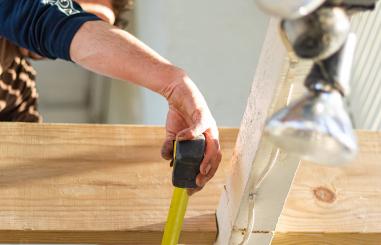So, you’ve signed the contract, picked the tiles, and the slab’s down, but suddenly, your client wants to upgrade the kitchen bench to Italian marble flown in from the Alps. No worries, mate, that’s where variations come in.
A variation is any change made to the original construction contract, whether it’s a bigger window, extra plumbing, or simply changing the colour of a feature wall because “beige just isn’t vibing anymore.” It sounds simple, but if not handled appropriately, variations can cause budget blowouts, delays, or even client-builder disputes. That’s why it’s essential to get it right from the start.
Put it in Writing – Verbal agreements don’t count. Every change needs a formal Variation Request with a clear scope, cost, and impact on timelines.
Client Approval is Key – No signature, no change. Always get written client approval before proceeding with any work.
Be Transparent About Costs – quote the variation like you would for any job. Hidden costs = unhappy clients.
Keep Documentation Tight – Attach variation forms to your project file or digital system, such as Buildxact or Xero, to stay organised.
Update the Contract – Once the variation is approved, the original contract should be updated to reflect the new terms.
In NSW, under the Home Building Act 1989, variations to residential building contracts must be in writing and signed by both parties, even if it’s just adding a fancy tap. Failure to document a variation properly could leave you legally exposed, or worse, unpaid!
Variations have been part of construction since the Egyptians decided to “make the pyramids taller.” Back then, it meant more slaves. These days, it means more paperwork (and maybe a few extra dollars if you're lucky). The trick? Stay calm, stay clear, and keep that paper trail neat.
“A variation is not a problem; it’s an opportunity to build better, smarter, and stronger relationships.”
Got a project with a few changes popping up? Don’t let variations rattle your build. At Prescom Constructions, we’ve got a bulletproof system for managing variations with clarity and ease.
Contact us today and let’s keep your project running smoothly.


Prime Costs (PC) and Provisional Sums (PS) are essential terms in construction quotes. Prime Costs cover allowances for materials like fixtures or appliances that haven't been selected yet, offering flexibility but potentially leading to additional costs if more expensive options are chosen. Provisional Sums are estimates for work not fully defined when quoting, like excavation or retaining walls, and may change due to unforeseen circumstances. Understanding the distinction helps homeowners manage budgets and avoid surprises during the building process.
Read more
A pre-handover inspection is crucial when taking possession of a new home to ensure any issues or defects are addressed before the final settlement. Key areas to check include the structural integrity (e.g., walls, floors), fittings and fixtures (e.g., taps, doors, windows), kitchen appliances, bathroom tiles and plumbing, electrical systems, and finishes like paintwork and flooring. By thoroughly inspecting these aspects, homeowners can prevent costly repairs later and ensure a smooth transition into their new home.
Read more
In recent years, a new trend has emerged in the world of residential homes known as the Australian Hamptons style. This unique architectural and interior design style combines elements of traditional Hamptons style with a distinctive Australian twist, resulting in homes that are both elegant and relaxed. Often referred to as Aussie Hamptons, these homes have gained popularity for their timeless appeal and seamless integration with the beachy Australian lifestyle.
Read more